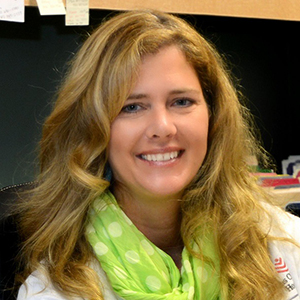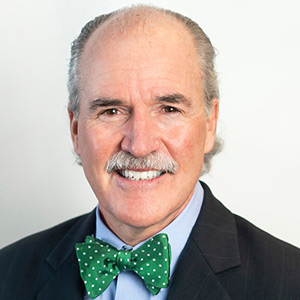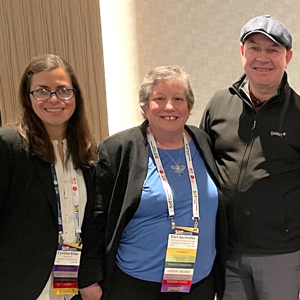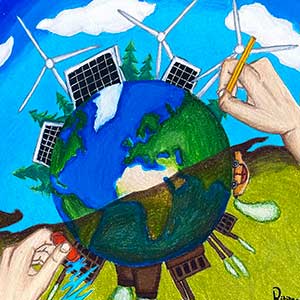Millions of tons of small pieces of plastic, referred to as microplastics, are finding their way into the world’s oceans. These microplastics and other chemicals could affect human health. The NIEHS and the U.S. National Science Foundation (NSF) are jointly funding four new Centers for Oceans and Human Health and renewing two centers as part of a marine-related health research program.
Each Center will focus on a different aspect of the interplay among environmental science, climate change, and human health in the ocean or Great Lakes. Together, the two agencies plan to invest more than $42 million over five years for the Centers program, continuing a two-decade long collaboration.
"The connection among ocean pollution, climate change, and human health are problems that we are only beginning to understand," said Anika Dzierlenga, Ph.D., program lead at NIEHS. “People rely on oceans and lakes for jobs, food, tourism, recreation. These centers will help bring researchers and community groups together to study and take action to protect public health in coastal regions and around the Great Lakes.”

Microplastics research hub
One of the Centers, a collaboration between the University of Rochester and Rochester Institute of Technology in New York, will focus specifically on plastic pollution, including microplastics. The Center will also focus on how climate change could intensify the environmental and health threats posed by microplastics.

Microplastics, ranging from the size of a width of a pencil to smaller than a sesame seed, often get eaten by fish and shellfish and are passed to humans through seafood consumption. They also act as microscopic sponges, attracting, concentrating, and carrying pollutants into new environments. These plastic particles and other factors, including a warming climate and more extreme weather events, are affecting the health of our waterways, and, in turn, the health of our communities.
“We know very little about what these microplastics or even smaller pieces of plastics, known as nanoplastics, can do to human health in the short- or long-term, or even what they can do to the health of the sea turtles and other animals that live in the ocean,” said Dzierlenga.
Nanoplastics measure under one micrometer in length, the width of a spider web or virus, making it easy for them to enter the human body through eating, breathing, and absorption through the skin. Once inside the body, they may leach harmful chemicals that may affect development, reproduction, and immune system responses.
20-year collaboration with NSF
“We’re excited to continue this long-standing partnership with NIEHS,” said Henrietta Edmonds, Ph.D., a program manager in NSF’s Division of Ocean Sciences. “Bringing geoscientists, health scientists, and community partners together to address these important questions has far-ranging impacts beyond what either agency can support alone.”
Together the agencies will support the following newly funded institutions, listed alphabetically along with the project name, lead researcher, and brief project description.
North Carolina State University, Raleigh
North Carolina Center for Coastal Algae, People, and Environment (NC C-CAPE)
Principal Investigator: Astrid Schnetzer, Ph.D.
This center, which was awarded at the end of February, will help lay the groundwork for how cyanobacterial (blue-green algae) blooms in estuaries or coastal waters affect seafood safety and public health. This research will help inform guidelines for the safe consumption of water and seafood. NC C-CAPE will also actively engage with community experts and stakeholders to guide the translation and application of research findings.
University of California-San Diego
Scripps Center for Oceans and Human Health: Advancing the science of marine contaminants and seafood safety
Principal Investigator: Bradley Moore, Ph.D.
The Scripps Center for Oceans and Human Health will evaluate the factors contributing to seafood safety concerns, including impact from climate and weather, distribution of toxic chemicals across the aquatic food source chain, the role of the marine microbiome in toxin metabolism, and animal and human response to toxic chemicals. The grantees will consider both risks and benefits to seafood consumption and will help to develop messaging to seafood consumers.
University of Rochester and Rochester Institute of Technology, New York
Lake Ontario Center for Microplastics and Human Health in a Changing Environment
Principal Investigators: Katrina Smith Korfmacher, Ph.D., University of Rochester, and Christy Tyler, Ph.D., Rochester Institute of Technology
This new center will be the first center within the Oceans and Human Health Centers to focus solely on plastic pollution and microplastics. The Research organizations will collaborate to study the life cycle of plastic in Lake Ontario as it pertains to ecological and human health. The aim is to engage diverse local partners to prevent negative health effects of microplastics in the context of climate change in the Great Lakes region. The Great Lakes are the largest surface freshwater system in the world and are a critical resource for more than 30 million people.
Woods Hole Oceanographic Institution, Massachusetts
Woods Hole Center for Oceans and Human Health
Principal Investigator: Dennis McGillicuddy, Ph.D.
Funding for this center has been renewed in 2024 and will build off its previous research to address how a changing climate could influence harmful algal bloom (HAB) dynamics and human exposure to HAB toxins, a serious and global human health threat. The center will also work to improve awareness of emerging HAB issues for the public health community and develop new educational materials and interactive activities for K-12 classrooms, and for health care providers.
NIEHS and NSF expect to make two additional awards soon.
(Robin Mackar is a writer and media relations coordinator in the NIEHS Office of Communications and Public Liaison.)









